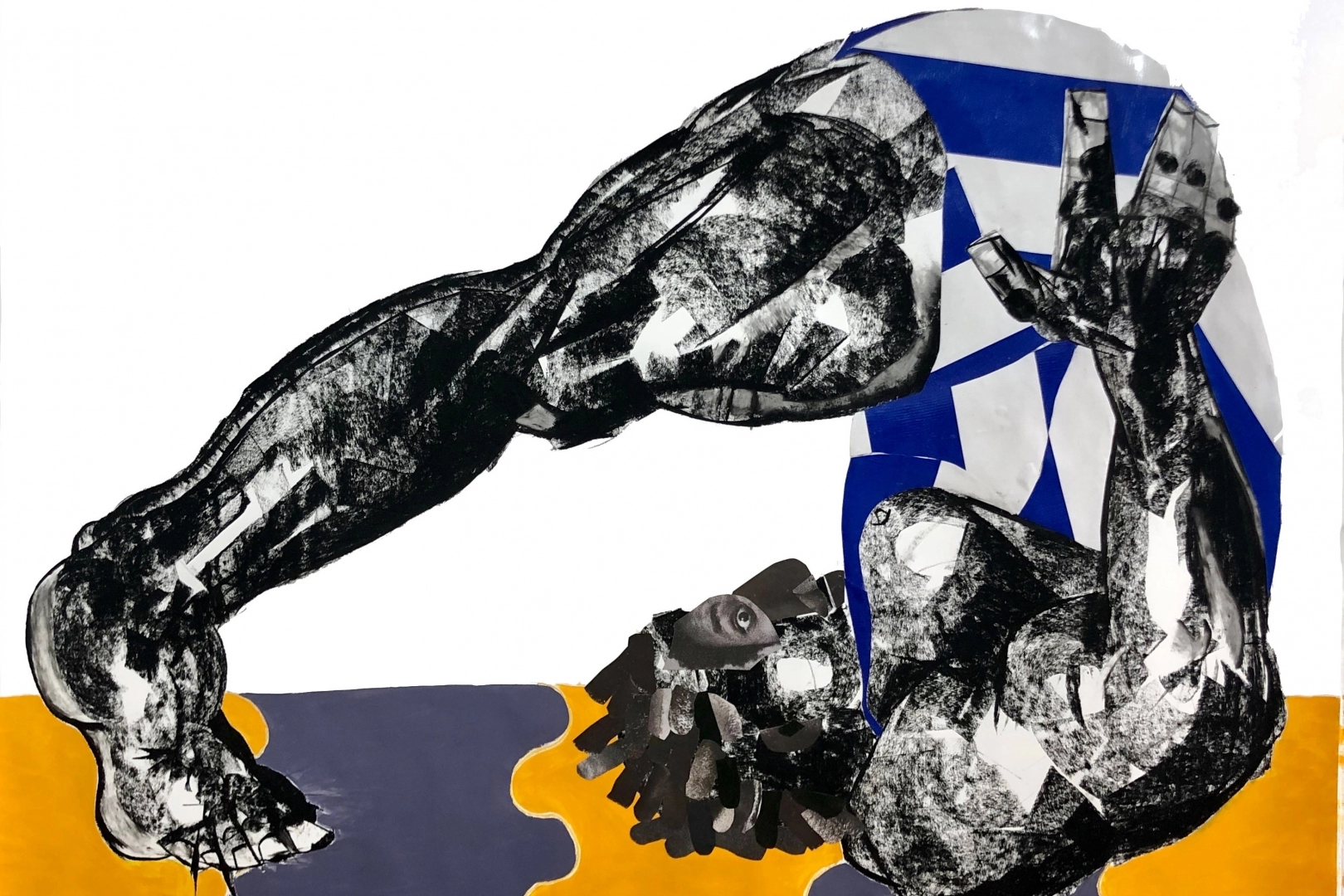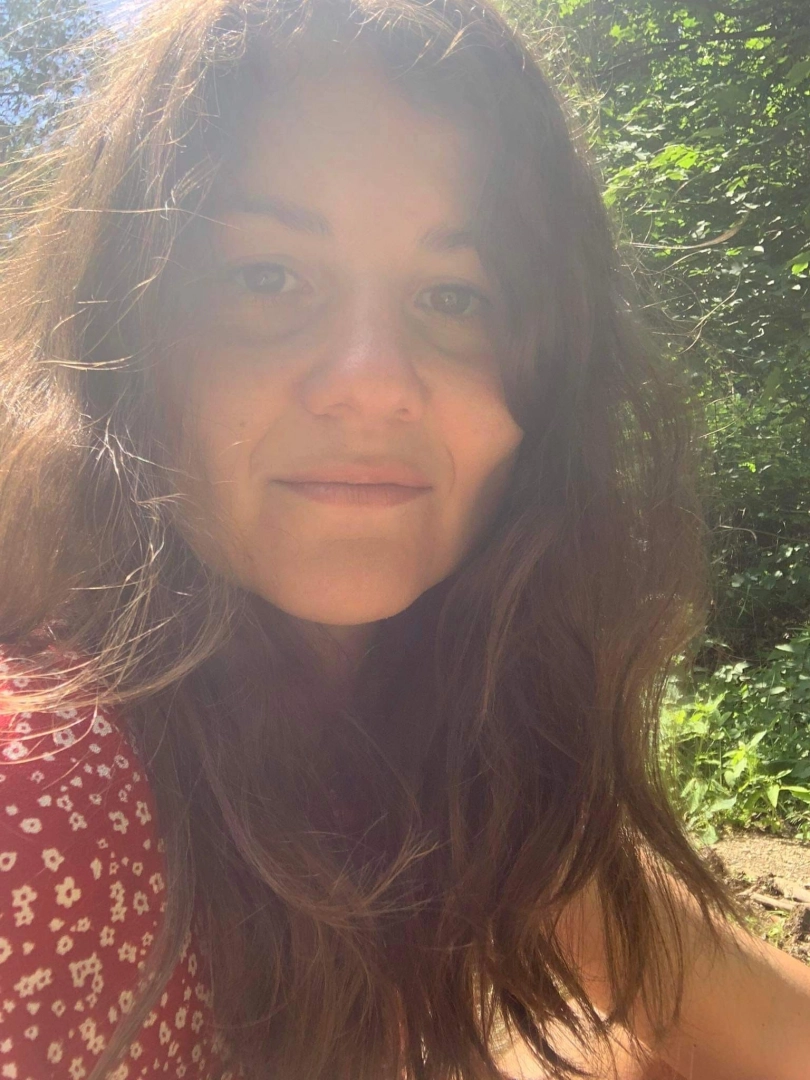When Clotilde Jiménez describes his artistic activity as a matter of necessity, what he means is far from a mere compulsive need to create. Everything related to his work, from expressive use of collage to topics he focuses on, even his very determination to pursue art emerged from, according to his own words, not having any other choice.
Anything at hand
"I grew up in Philadelphia, in a low-income area, and the school in my area was really bad. When I was about to enroll, my mom found this new school for architecture and design, and they had a program for at-risk youth. She told me then that the school was the only way to not end up like everyone else. So I applied."
In his impressive sculptures and collages, Jiménez combines visions of boxers and bodybuilders, family and physicality, queerness and blackness. He now lives in Mexico City and recently closed his debut solo exhibition at Mariane Ibrahim Gallery in Chicago titled "The Contest". It was his first solo exhibition since the exhibition at the Jacob Lawrence Gallery in Seattle in 2018.
Just as Jiménez sees his entry into the world of visual arts as a matter of necessity, so was his choice of media. During high school, he focused mainly on drawing: "We all have access to a piece of paper and a pencil, right?" he remarks. As he continued his art studies at a university, the often unbearable cost of certain materials continued to define both his practice and personal philosophy. When he found out he was running low on resources, he had to innovate with what was at hand again: "I was broke and trying to paint something and I ran out of red paint and couldn't afford another tube, but I had all these magazines around, so I found some red, ripped it out, and pasted it on. Had I ripped out a red piece of paper and included it in a painting during art school, they would start asking me about Clement Greenberg. I’m like, I’m just broke!”

Collage of family emotions
Paradoxically, thanks to the initial adversity, collage showed to Jiménez a completely new means of expressiveness. After the first experiments with combining color and magazine cut-outs, he began incorporating materials such as tissue paper, paper towels, sandpaper, tablecloths, mattresses, and even clothing which he'd have brought home from his warehouse job for American Apparel.
Clotilde Jiménez was born in Honolulu and now lives and works in Mexico. He was raised by a Puerto Rican mother in a poor neighborhood in north Philadelphia as the middle child of three. His father, an amateur boxer, left the family when Clotilde was five. His adolescence was marked by constant exploration of his surroundings, especially the aspects that shaped his daily life (socioeconomic background and skin color). He found strange that not much of his daily-life reality was reflected in the mainstream media he was consuming. Very soon he felt the need to question what was expected of him as a young African American man, he says.
%20P%C3%B3za%20%C4%8D-%205.jpg)
%20P%C3%B3za%20%C4%8D-%204%20(1).jpg)
Jiménez's work clearly and strongly responds to the artist's family background. Through his work, he attempts to unravel multi-layered and complex issues that have been rooted in the human mind for centuries (set ideas about race or class).
In the last few years, Jiménez's work has embraced the exploration of gender, sexuality and masculinity, especially in the context of him openly owning up to his own bisexuality. His latest series Pose and The Contest, which were exhibited at Chicago's Mariane Ibrahim Gallery in 2020, capture the artist's own intersecting masculinity and sexuality.
Reconciliation with the father
Jiménez draws here from memories of his own amateur boxing history. When he was 13, his father encouraged him to take up boxing, as the sport had been fostered in his family for generations. Clotilde describes his boxing themed works as an "open letter to the father", in which he confesses his own concept of masculinity and physicality.
The need to portray his own life experience led Jiménez to create bronze busts and mirror athletes. The posing, contorted Black bodies in his collages are composed of cut-outs and charcoal, their vibrant backgrounds are made of cloth and the bronze sculptures wear boxing helmets.
%20Clotilde%20Jimenez%20v%20expozici%20sv%C3%A9%20v%C3%BDstavy%20.jpg)
The show reflected his childhood spent in Philadelphia gyms, but it also stood for a revival of the connection between Jiménez and his father, a age-long boxer and bodybuilder with whom Jiménez reconnected. When he was working out the exhibition's concept, he returned to boxing; first during his master's studies at the Slade School of Art in London and later with his father in Philadelphia. "At a certain point in everyone’s life, they want to fight their dad," he jokes. And while the boxing matches with his father were excruciating, they were also cathartic, as he puts it, both for the reconciliation they brought and for recognizing how family tradition, and bodybuilding, can surprisingly overlap with queer identity.
%20P%C3%B3za%20%C4%8D-%207%2C%202020.jpg)







